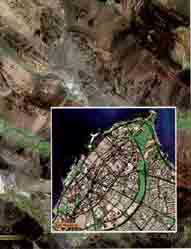Document Type : Research Paper
Author
Abstract
Since it is possible to achieve precision of two centimeters (or better) for orthometric altitudes (perpendicular to geoid) derived from GPS, this paper is intended to provide a brief and practical guide to the use of GPS devices, methods of reference determination, data collection and geoid models that provide surveyors with high-precision orthometric altitudes. Although this paper is basically written for American surveyors, all other surveyors can benefit from the experiences collected in this paper as well. Achieving two-centimeter precision for GPS-based orthometric altitudes can be achieved using iterative, radial and fast static GPS techniques along with a high resolution geoid model.
These methods can be implemented in an area of less than 30 km2, and since field GPS methods and observation time periods are not directly proportional to the length of the base line, these methods can not be immediately applied to large-scale projects (i.e., Lands with areas more than 30 km2). The author of this paper intends to present a brief and practical guide and is not to provide a substitute for the GPS manual, but to create an incentive for surveyors to study the device's manual with great attention.

